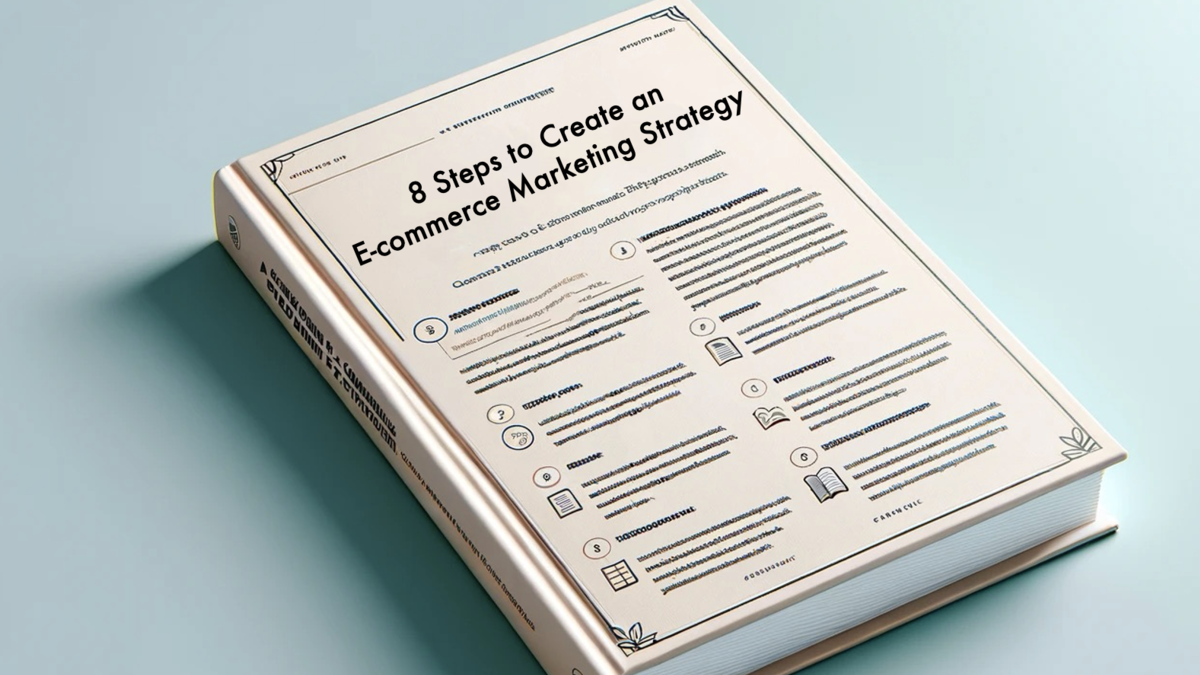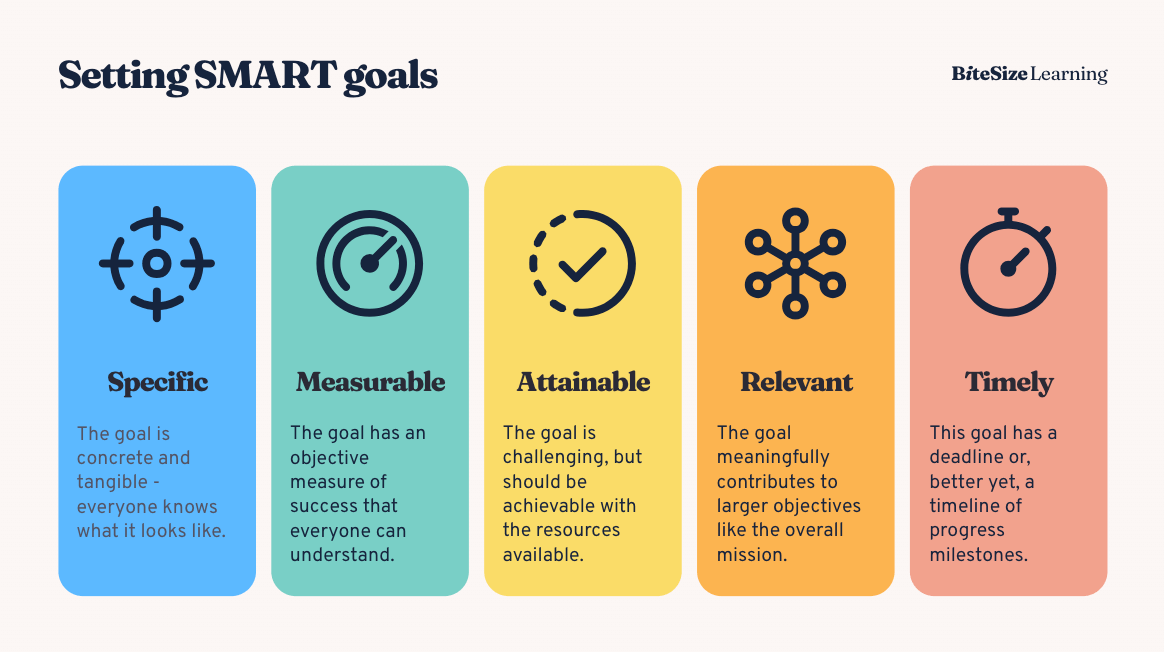blog»Business Strategy»8 Steps to Create an E-commerce Marketing Strategy

8 Steps to Create an E-commerce Marketing Strategy
2024/01/15
You can read this article in about 37 minutes
Introduction
Welcome to the bustling, ever-evolving world of e-commerce! Whether you’re launching a new online store or looking to revamp your existing digital presence, the right marketing strategy is your golden ticket to success. But let’s face it, navigating the e-commerce landscape can sometimes feel like trying to solve a Rubik’s Cube blindfolded. That’s where we come in.
In this comprehensive guide, we’ll walk you through the eight essential steps to crafting a winning e-commerce marketing strategy. Think of it as your personal roadmap, designed to guide you through the maze of digital marketing with ease and confidence. From pinpointing your ideal customer to mastering the art of SEO, each step is packed with insights and actionable tips tailored for the dynamic world of online retail.
We’re not just talking about throwing a few ads out there and hoping for the best. No, this is about building a robust, holistic strategy that aligns with your brand’s goals, resonates with your audience, and adapts to the ever-changing digital market trends. It’s about understanding the unique pulse of your business and using that knowledge to stand out in a crowded online marketplace.
So, whether you’re a seasoned e-commerce pro or just dipping your toes in the digital marketing waters, this guide is for you. Get ready to dive deep into the world of e-commerce marketing and emerge with a strategy that not only drives traffic and sales but also cements your brand’s place in the digital arena. Let’s get started!
Chapter 1: Define Your Target Audience
Kicking off your e-commerce marketing strategy without knowing your target audience is like setting sail without a compass. You might catch a breeze, but where are you going? Defining your target audience is the cornerstone of your marketing strategy, essential for navigating the vast ocean of e-commerce.

First things first, let’s talk demographics. Who are your potential customers? We’re looking at age, gender, location, income level – the works. But don’t stop there. Dive deeper. What are their interests, buying habits, and pain points? For example, if you’re selling eco-friendly activewear, your target audience might not just be people who exercise, but those who are environmentally conscious and prefer sustainable products.
Now, let’s bring this to life with a real-world example. Take, for instance, the success story of Burt’s Bees. They didn’t just target anyone interested in skincare. They narrowed it down to environmentally conscious consumers looking for all-natural ingredients. By understanding their audience’s values and lifestyle, Burt’s Bees tailored their marketing messages to resonate deeply, focusing on sustainability and natural ingredients, which helped them stand out in a crowded market.

But how do you gather all this intel? Start with your current customer base. Look at your sales data, conduct surveys, and engage with them on social media. Check out what your competitors are doing, too. Who are they targeting? How are their customers responding?
Remember, a well-defined target audience helps you create more focused and effective marketing campaigns. It’s not about excluding people; it’s about marketing smarter. By zeroing in on the needs and wants of a specific group, you increase your chances of hitting the bullseye – making a connection that converts to sales.
So, before you jump into the nitty-gritty of your strategy, take the time to understand who you’re talking to. It’s the first step in ensuring your marketing efforts are on point and your e-commerce ship is sailing in the right direction.
Chapter 2: Set Clear Goals and Objectives
Alright, now that you’ve got a handle on who you’re talking to, it’s time to figure out what you want to say – and more importantly, what you want to achieve. Setting clear goals and objectives is like plotting your destination before you embark on a journey. It gives your e-commerce marketing strategy direction and purpose.
So, what do your goals look like? Are you aiming to increase brand awareness, boost sales by 20%, or grow your email subscriber list by a thousand? Be specific. “Increase sales” is a good start, but “Increase online sales by 25% within the next quarter” puts a clear target on the board. These goals should be SMART: Specific, Measurable, Achievable, Relevant, and Time-bound. This approach turns lofty ambitions into realistic targets.

Let’s take a leaf from the playbook of Dollar Shave Club. When they entered the market, their goal wasn’t just to sell razors. They aimed to disrupt the traditional shaving industry by building a subscription model that catered to convenience and cost-effectiveness. Their launch campaign was focused, memorable, and hilariously relatable, quickly escalating their brand presence. By setting a clear, attainable objective and aligning their marketing efforts to it, they managed to carve out a significant niche in a market dominated by longstanding brands.

But how do you align your goals with your business objectives? It starts with understanding your business inside out. What are your strengths? Where do you need to grow? Aligning your marketing goals with these areas ensures that your efforts contribute to the bigger picture of your business’s success.
Remember, each goal should lead to a specific action or strategy in your marketing plan. Want to increase brand awareness? Invest in social media campaigns. Looking to boost sales? Optimize your website for conversions. Every goal should guide your marketing tactics, ensuring that each step you take moves you closer to your desired outcome.
Setting clear, well-defined goals isn’t just about having a target to hit. It’s about creating a focused roadmap for your e-commerce journey, ensuring that every marketing effort is a step in the right direction.
Chapter 3: Conduct a Competitive Analysis
Imagine you’re in a game of chess. You wouldn’t make a move without scoping out your opponent’s pieces, right? The same goes for e-commerce marketing. Conducting a competitive analysis is your way of understanding who you’re up against and what moves they’re making. It’s all about getting that strategic edge.
So, how do you go about this? Start by identifying your main competitors – both the big fish and the smaller, nimbler ones. What are they doing well? Maybe their social media game is top-notch, or their customer service is something to rave about. Also, look for gaps in their strategies – areas where your brand can potentially shine. Are they missing out on a specific demographic? Is there a product line they haven’t explored?
For a great example, let’s look at how Netflix revolutionized the entertainment industry. They weren’t the first in the streaming game, but they analyzed what others like Blockbuster were missing – convenience and a subscription model free from late fees. By understanding and acting on these gaps, Netflix transformed itself from a DVD rental service to an industry giant.

But it’s not just about what your competitors are doing. It’s also about staying up to date with industry trends. Are there new technologies or platforms you should be aware of? What are the emerging consumer behaviors?
This step is crucial because it informs how you position your brand in the market. It helps you identify opportunities for differentiation and innovation. Perhaps there’s a niche market your competitors are overlooking, or a new social media trend you can capitalize on.
Conducting a competitive analysis isn’t about copying or one-upping your competitors. It’s about understanding the landscape so you can navigate it more effectively. It’s about finding that sweet spot where your brand can meet customer needs in a way that others aren’t. That’s how you carve out your own space in the e-commerce world.
Chapter 4: Choose the Right Sales Channels
Now that you’ve scoped out the competition, it’s time to talk about where you’re going to showcase your products. Choosing the right sales channels is like picking the perfect stage for your play. You want it to be where your audience can see and interact with your brand most effectively.
In the e-commerce world, options abound. There’s your website, online marketplaces like Amazon or Etsy, social media platforms, and even brick-and-mortar stores if you’re going for an omnichannel approach. Each channel has its strengths and caters to different types of consumers. Your job is to figure out which channels align best with your product, brand, and target audience.
Take, for example, Warby Parker, the eyewear company. They started online with a direct-to-consumer model, offering a home try-on program. This approach was perfect for their target market – tech-savvy consumers looking for convenience and a personalized experience. Later, they expanded into physical stores, providing a seamless online-to-offline experience that further strengthened their brand presence.

Choosing the right channels involves a bit of research. Where do your potential customers like to shop? Are they more likely to browse Instagram, scroll through Amazon, or visit a physical store? Maybe it’s a mix of all three. Understanding these preferences is key to picking channels that will get your products in front of the right eyes.
Also, consider the nature of your products. High-end, custom items might be better suited for a dedicated website to convey exclusivity, while handmade or niche products might thrive on platforms like Etsy.
Remember, it’s not just about being everywhere; it’s about being where it makes the most sense for your brand. By choosing the right sales channels, you ensure your marketing efforts are focused, efficient, and, most importantly, effective in driving sales and building brand loyalty.
Chapter 5: Develop a Content Marketing Strategy
Content is king – a phrase you’ve probably heard a million times, but it’s a staple in the digital marketing pantry for a reason. Developing a solid content marketing strategy is like crafting a compelling story that captivates your audience. It’s about providing value beyond just selling products; it’s about engaging, educating, and building a relationship with your customers.
So, what does a good content strategy look like? It could be anything from blog posts, how-to guides, and infographics to engaging videos and podcasts. The key is to create content that resonates with your audience and reflects your brand’s voice. But remember, it’s not just about creating content; it’s about creating the right content. That means understanding what your audience finds helpful, interesting, or entertaining.
Take GoPro, for example. They didn’t just sell cameras; they sold a lifestyle. Through user-generated content showcasing thrilling adventures and experiences, GoPro positioned itself as an essential tool for capturing life’s most exciting moments. This approach not only demonstrated the product’s capabilities but also built a community of brand advocates sharing their content.

Your e-commerce content strategy should also be geared towards SEO (Search Engine Optimization). Use keywords strategically, ensure your content is high quality and useful, and keep your website’s blog updated regularly. This boosts your visibility on search engines and drives organic traffic to your site.
Additionally, think about the different stages of the buyer’s journey. What information do they need when they’re just browsing? When they’re considering a purchase? After they’ve bought something? Tailor your content to these stages to guide your customers smoothly along their buying journey.
A great content strategy doesn’t just attract eyeballs; it engages and retains them. By developing a content plan that resonates with your audience, you create more than just sales; you build a community around your brand. And in the world of e-commerce, that’s priceless.
Chapter 6: Optimize for Search Engines (SEO)
Diving into the world of SEO (Search Engine Optimization) is a bit like joining a treasure hunt. You’re on a quest to make your e-commerce site as visible and attractive as possible to search engines, and by extension, to your potential customers. It’s a crucial part of your digital strategy, as it helps people find you when they’re searching for products or services you offer.
SEO for e-commerce isn’t just about stuffing keywords into your web pages. It’s a sophisticated game that involves optimizing your website’s structure, improving page loading speeds, creating high-quality content, and ensuring a mobile-friendly experience. Let’s not forget the power of backlinks from reputable sites, which can significantly boost your site’s credibility and ranking.
A fantastic example of SEO done right is Zappos. This online shoe and clothing retailer doesn’t just rely on the strength of its products. Zappos crafted a robust SEO strategy that includes keyword-rich product descriptions, an easily navigable website, and a plethora of helpful content, ranging from fashion tips to how-to guides. This approach not only enhances their visibility on search engines but also establishes them as a helpful and authoritative source in their industry.

Don’t forget the importance of local SEO, especially if you have physical stores. Optimizing for local search ensures that you show up in the right place at the right time – when local customers are searching for products or services you offer.
In a nutshell, think of SEO as the compass that guides customers to your online store. With the right optimization strategies, you can improve your site’s visibility, drive more traffic, and ultimately, increase sales. It’s an ongoing process, but the rewards – a steady stream of organic traffic and an enhanced online presence – are well worth the effort.
Chapter 7: Leverage Social Media Marketing
In today’s digital era, social media isn’t just a ‘nice to have’ for your e-commerce business; it’s a must-have. It’s like hosting a party where your customers are the guests of honor – you want to engage them, entertain them, and most importantly, connect with them on a personal level. Leverage social media marketing to not only showcase your products but also to tell your brand’s story, build community, and engage directly with your customers.
But it’s not just about being present on social media; it’s about being strategic. Which platforms do your customers use most? Instagram, with its visually rich content, might be perfect for a fashion brand, while LinkedIn could be ideal for B2B marketing. Tailor your content to fit the platform and the preferences of its users.
Take, for instance, Glossier, a beauty brand that has mastered the art of social media marketing. They’ve built a cult following by creating a brand that’s as much about their customers as it is about their products. Through engaging content, user-generated photos, and authentic interactions, Glossier has created a sense of community that resonates deeply with its audience.

Remember, social media is a two-way street. It’s not just about broadcasting your message; it’s about listening and responding. Engage with your followers, respond to comments, and participate in conversations. This helps humanize your brand and build trust with your audience.
Also, don’t shy away from experimenting with different types of content. Live videos, stories, polls, and behind-the-scenes content can add variety and keep your audience engaged.
In essence, social media marketing gives your e-commerce brand a voice and a personality. It’s an opportunity to not just sell, but to connect and create lasting relationships with your customers. So, go ahead, dive into the social media pool – the water’s just fine!
Chapter 8: Monitor, Analyze, and Adjust
So, you’ve set the sails for your e-commerce marketing journey, but how do you ensure you’re navigating towards success? That’s where the critical trio of monitoring, analyzing, and adjusting comes into play. Think of it as the cycle that keeps your marketing strategy sharp and effective, constantly fine-tuning your course based on real-world feedback and results.
Start with monitoring. It’s like having your eyes on the horizon, using tools to track how your campaigns are performing. Are people clicking on your ads? How’s your website traffic? Which blog posts are getting the most traction? Keeping a close eye on these metrics is crucial for understanding the impact of your marketing efforts.
Now, let’s talk about analyzing. This step goes beyond surface-level observations to dig into the ‘why’ and ‘how.’ Why did one campaign outperform another? How are customers interacting with your website? For instance, ASOS, the global fashion destination, excels in this area. They constantly analyze customer data to personalize the shopping experience, tailoring recommendations and content to individual preferences.

After analysis comes the all-important step of adjusting. Based on your insights, you might tweak your ad campaigns, refine your content strategy, or revamp parts of your website. It’s about being responsive and agile, making smart changes to enhance your marketing effectiveness.
To help you master this critical cycle, consider using Ptengine. Our platform offers a comprehensive suite of tools to help you monitor your online presence, analyze customer behavior, and adjust your strategies for optimal performance. Sign up for our trial package today and take the first step towards a more data-driven, responsive marketing strategy. Remember, in the dynamic world of e-commerce, staying still is not an option. Keep evolving, and keep sailing towards success!
Companies with Successful Marketing Strategies
In the bustling world of e-commerce, some companies stand out for their savvy marketing strategies. Let’s dive into a few case studies that exemplify the principles we’ve discussed in the previous chapters.

Amazon: When it comes to understanding your audience and using SEO effectively, Amazon is the master. Their personalized recommendations and optimized product listings keep them at the top of search results and customers’ minds. They’re the jack-of-all-trades in e-commerce, seamlessly integrating various sales channels and consistently adapting their strategies based on data-driven insights.

Zara: Fast fashion, faster strategies. Zara’s ability to rapidly respond to fashion trends is unmatched. They’ve nailed social media marketing, creating buzz with each collection. Their secret sauce? A keen eye on competitor moves and a deep understanding of their fashion-forward audience.

Warby Parker: Originally an online-only retailer, Warby Parker expanded to physical stores, offering a seamless online-to-offline experience. They’ve honed in on their target audience, providing a personalized shopping experience, both digitally and in their chic boutiques.

Nike: More than just a sports brand, Nike’s content marketing game is inspirational. Their campaigns resonate with their target audience, often going viral. They’ve mastered the art of storytelling, creating content that’s not just about shoes, but about the athletes who wear them.

ASOS: A trendsetter in fashion e-commerce, ASOS uses SEO and competitive analysis to stay ahead. Their website is a haven for young, style-conscious shoppers, with every aspect tailored to their audience’s preferences, from product selections to the overall user experience.
Each of these companies demonstrates the power of a well-crafted e-commerce marketing strategy. They show us that understanding your audience, choosing the right channels, creating compelling content, and being ready to adapt are key ingredients for success in the digital marketplace.
Conclusion
And there you have it – your comprehensive guide to crafting a winning e-commerce marketing strategy. From defining your target audience to the continuous cycle of monitoring, analyzing, and adjusting, each step is a critical piece of the puzzle in navigating the vibrant world of online retail.
Remember, understanding your audience sets the stage for everything that follows. It’s the foundation upon which you build your marketing fortress. Then, by setting clear, actionable goals, you create a roadmap to guide your journey. Add to this a keen awareness of your competition, and you’re not just walking blind into the battlefield; you’re strategizing with insight.
Choosing the right sales channels is about being where your customers are, speaking their language, and making your products irresistibly accessible. Coupled with this, your content marketing strategy is your chance to shine, to show your audience who you are beyond just a seller of goods. It’s your voice in the crowded marketplace.
SEO is your beacon in the digital world, guiding customers to your shores. And let’s not forget the power of social media – a potent tool in your arsenal to connect, engage, and build lasting relationships with your audience. Excited about amplifying your online visibility? Stay tuned for next week’s article, where we’ll dive deep into practical SEO tips. Get ready to unlock the secrets of boosting your website’s search engine ranking and drawing in more traffic than ever before!
Finally, the trinity of monitoring, analyzing, and adjusting your strategy ensures that your marketing efforts are not set in stone but are living, breathing entities that grow and evolve with your business.
As you embark on this journey, remember that each step is an opportunity to learn, grow, and refine your approach. The world of e-commerce is dynamic and ever-changing, and so should be your strategy. Embrace the adventure, be ready to adapt, and watch as your brand reaches new heights.
Ready to dive deeper into the art of e-commerce marketing? Start with Ptengine, and embark on a journey of discovery and success. Here’s to crafting a strategy that not only meets but exceeds your wildest marketing dreams!